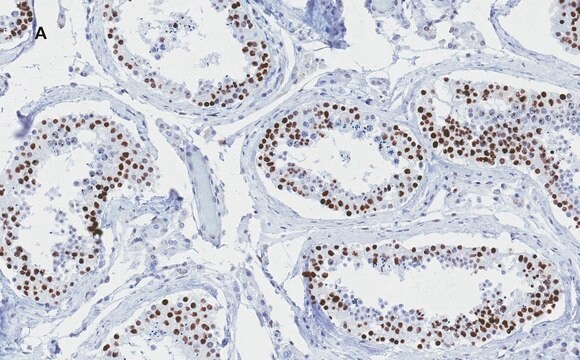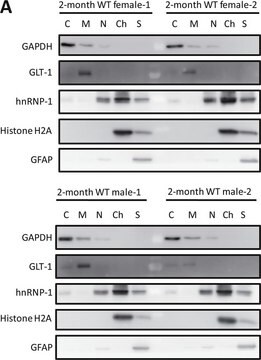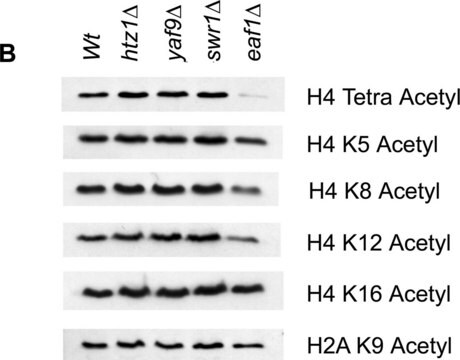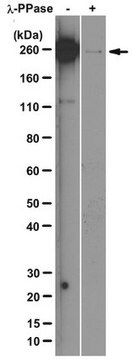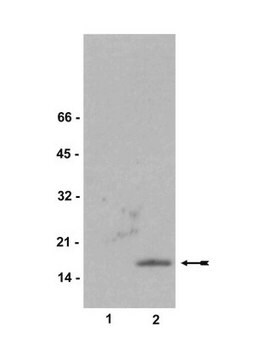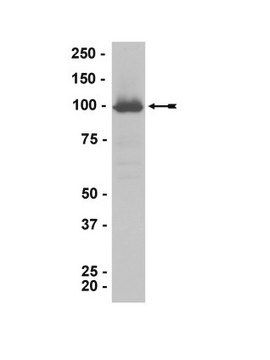07-745-I
Anti-phospho Histone H2A (Ser129) Antibody
from rabbit, purified by affinity chromatography
Sinônimo(s):
Histone H2A.1
About This Item
Produtos recomendados
fonte biológica
rabbit
Nível de qualidade
forma do anticorpo
affinity isolated antibody
tipo de produto de anticorpo
primary antibodies
clone
polyclonal
purificado por
affinity chromatography
reatividade de espécies
yeast
técnica(s)
dot blot: suitable
immunocytochemistry: suitable
immunoprecipitation (IP): suitable
inhibition assay: suitable (peptide)
western blot: suitable
nº de adesão NCBI
nº de adesão UniProt
Condições de expedição
wet ice
modificação pós-traducional do alvo
phosphorylation (pSer129)
Informações sobre genes
Saccharomyces cerevisiae ... Hta1(851811)
Descrição geral
Especificidade
Imunogênio
Aplicação
Immunoprecipitation Analysis: A 1:100 dilution from a represenetative lot immunoprecipitated phospho Histone H2A (Ser129) from yeast extracts.
Immunohistochemistry Analysis: A 1:1,000 dilution from a lot detected phospho Histone H2A (Ser129) from yeast cells.
Epigenetics & Nuclear Function
Histones
Qualidade
Western Blotting Analysis: 0.02 µg/mL of this antibody detected an increase in signal for phospho Histone H2A (Ser129) in MMS treated yeast nuclear extract over untreated yeast nuclear extract.
Descrição-alvo
forma física
Armazenamento e estabilidade
Outras notas
Exoneração de responsabilidade
Não está encontrando o produto certo?
Experimente o nosso Ferramenta de seleção de produtos.
Código de classe de armazenamento
12 - Non Combustible Liquids
Classe de risco de água (WGK)
WGK 1
Ponto de fulgor (°F)
Not applicable
Ponto de fulgor (°C)
Not applicable
Certificados de análise (COA)
Busque Certificados de análise (COA) digitando o Número do Lote do produto. Os números de lote e remessa podem ser encontrados no rótulo de um produto após a palavra “Lot” ou “Batch”.
Já possui este produto?
Encontre a documentação dos produtos que você adquiriu recentemente na biblioteca de documentos.
Nossa equipe de cientistas tem experiência em todas as áreas de pesquisa, incluindo Life Sciences, ciência de materiais, síntese química, cromatografia, química analítica e muitas outras.
Entre em contato com a assistência técnica